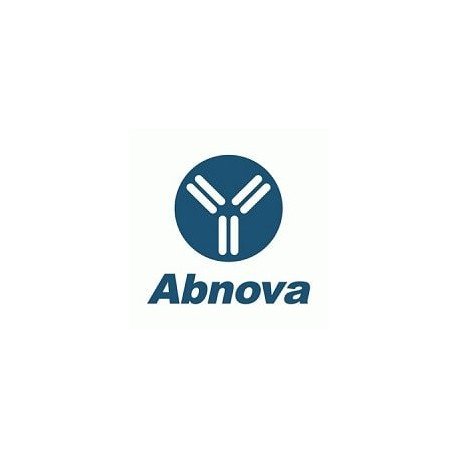Cart 0 Product Products (empty)
No products
To be determined Shipping
0,00 € Total
Prices are tax excluded
Product successfully added to your shopping cart
Quantity
Total
There are 0 items in your cart. There is 1 item in your cart.
Total products (tax excl.)
Total shipping (tax excl.) To be determined
Total (tax excl.)
Data sheet of FGFR1 polyclonal antibody
| Brand | Abnova |
| Product type | Primary antibodies |
| Reactivity | Human |
| Host species | Goat |
| Applications | ELISA,WB-Ti,IHC-P |
More info about FGFR1 polyclonal antibody
| Brand: | Abnova |
| Reference: | PAB6742 |
| Product name: | FGFR1 polyclonal antibody |
| Product description: | Goat polyclonal antibody raised against synthetic peptide of FGFR1. |
| Gene id: | 2260 |
| Gene name: | FGFR1 |
| Gene alias: | BFGFR|CD331|CEK|FGFBR|FLG|FLJ99988|FLT2|HBGFR|KAL2|N-SAM |
| Gene description: | fibroblast growth factor receptor 1 |
| Immunogen: | A synthetic peptide corresponding to human FGFR1. |
| Immunogen sequence/protein sequence: | CLPRHPAQLANGGLKR |
| Protein accession: | NP_000595;NP_056934;NP_075593;NP_075594;NP_075599 |
| Form: | Liquid |
| Concentration: | 0.5 mg/mL |
| Recommend dilutions: | ELISA (1:32000) Western blot (0.3-1 ug/mL) Immunohistochemistry (Formalin/PFA-fixed paraffin-embedded sections) (4-6 ug/mL) The optimal working dilution should be determined by the end user. |
| Storage buffer: | In Tris saline, pH 7.3 (0.5% BSA, 0.02% sodium azide) |
| Storage instruction: | Store at -20°C. Aliquot to avoid repeated freezing and thawing. |
| Quality control testing: | Antibody Reactive Against Synthetic Peptide. |
| Note: | This product contains sodium azide: a POISONOUS AND HAZARDOUS SUBSTANCE which should be handled by trained staff only. |
| Product type: | Primary antibodies |
| Host species: | Goat |
| Antigen species / target species: | Human |
| Specificity: | This antibody is expected to recognize 5 (out of nine reported) isoforms (as represented by NP_000595, NP_056934, NP_075593, NP_075594, NP_075599). |
| Reactivity: | Human |
| Application image: |  |
| Application image note: | FGFR1 polyclonal antibody (Cat # PAB6742) (0.3 ug/mL) staining of human breast lysate (35 ug protein in RIPA buffer). Primary incubation was 1 hour. Detected by chemiluminescence. |
| Applications: | ELISA,WB-Ti,IHC-P |
| Shipping condition: | Dry Ice |
| Publications: | Expression and function of placenta growth factor: implications for abnormal placentation.Torry DS, Mukherjea D, Arroyo J, Torry RJ. J Soc Gynecol Investig. 2003 May;10(4):178-88. |


